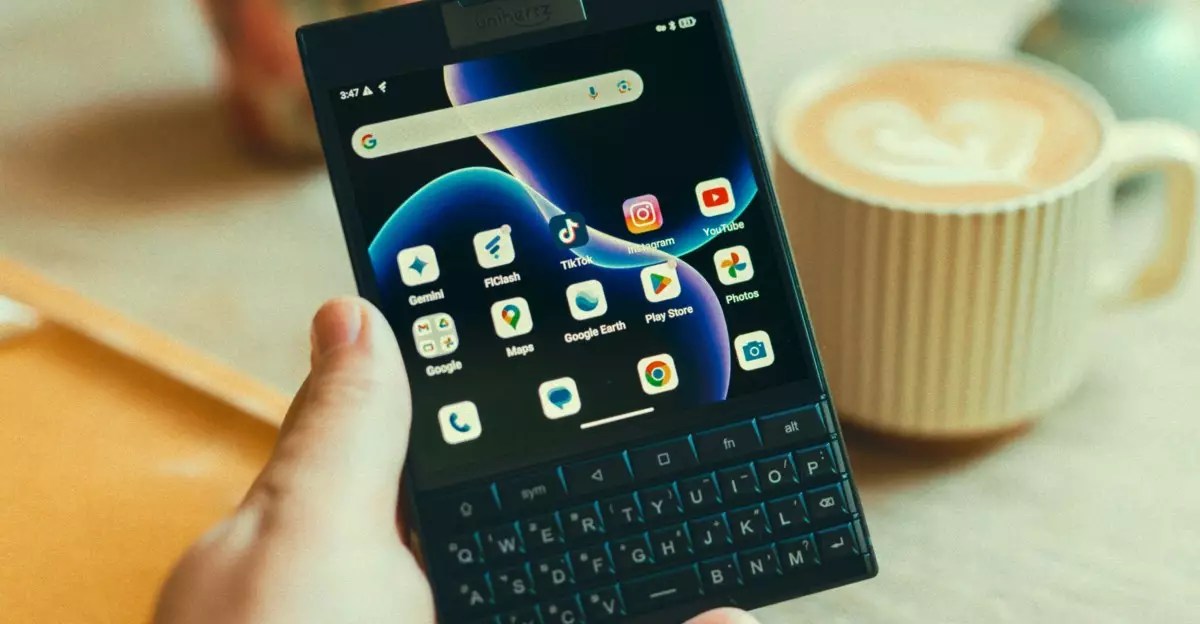In an age dominated by touchscreens, where the traditional physical keyboard has largely retreated into tech folklore, Unihertz is bravely revisiting the concept by launching the Titan 2. With technology continuously evolving, it may seem counterintuitive to return to a QWERTY layout; however, the need for tactile feedback in communication devices remains. The blend of nostalgia with modern technology encapsulated in this device offers enthusiasts a compelling choice. While many have pinned the physical keyboard as obsolete, Unihertz appears to be banking on an established niche thirsting for a revival, and, indeed, they are proving that innovation need not forsake tradition.
Design: Elegance Meets Functionality
One of the most striking features of the Titan 2 is its redesigned layout and slimmer profile. At just 10.85mm, the phone neatly challenges expectations of heft that often accompany keyboard devices. Weighing in at 235 grams, it’s a standout representation of lightweight engineering that doesn’t sacrifice essential features for portability. The preeminence of aesthetics is not lost here; this phone is not just meant to perform but to turn heads. Beyond looks, the functionality of its 4.5-inch screen, boasting an impressive 1,440 x 1,440 pixel resolution, signifies a subtle enhancement of user experience, providing clarity and sharpness that respects its productivity intent.
Camera Capabilities: More than Meets the Eye
The Titan 2’s photographic arsenal is truly noteworthy. With a 50MP main camera and a unique 8MP telephoto lens, it positions itself not just as a smartphone but a legitimate contender against conventional alternatives. The addition of a 2-inch secondary screen on the rear makes capturing selfies and monitoring notifications an effortless task, showcasing an intelligent use of space. While the resolution may not rival more extensive flagship devices, the emphasis remains on practicality; after all, this is primarily a productivity tool. Unihertz appears to recognize the evolving role of cameras in business and social networking, integrating them without overshadowing the primary purpose of the device.
Performance that Packs a Punch
Under the hood, the Titan 2 features a Dimensity 7300 processor, paired with a robust 12GB of RAM and 512GB of storage, which ensures that performance is not a limiting factor. This is crucial for users who rely on their devices for multitasking and productivity. The fact that the phone supports 5G connectivity places it firmly within the current tech landscape, proving that Unihertz is not merely attempting to recreate old glories but is keenly aware of modern demands. Fast charging capabilities further enhance its utility for on-the-go users.
Keyboard Innovation: Where Comfort Meets Customization
Perhaps the most intriguing aspect of the Titan 2 is the revamped keyboard. Described as delivering a “more comfortable, reliable, and versatile tactile typing experience,” this is where Unihertz seems to truly differentiate itself. The capacity for custom shortcuts—enabling users to tailor their keyboard experience to their specific workflows—profoundly enhances its usability. Innovative features such as touch-sensitive scrolling on the keyboard surface align with contemporary user expectations for efficiency in communication.
Value Proposition and Future Outlook
Priced at a competitive $399, with early backers gaining access for as little as $269, the Titan 2 is positioned at an appealing price point for a burgeoning market. With a successful Kickstarter campaign already underscoring public interest, the phone illustrates not just an isolated product launch, but rather a resurrection of a category that many assumed was defunct. The re-emergence of keyboard-centric smartphones suggests a burgeoning demand and highlights the potential for brands to carve out niches within an otherwise homogenous smartphone ecosystem. Unihertz’s Titan 2 stands as a testament to innovation that strategically honors the past while looking firmly toward the future. It invites us to reconsider our preferences amidst an ongoing technological evolution shaped by user experience and nostalgia.


Leave a Reply